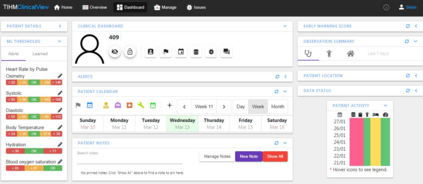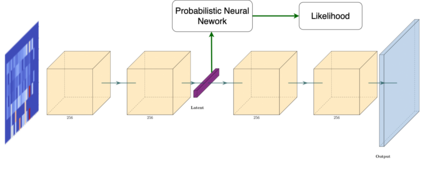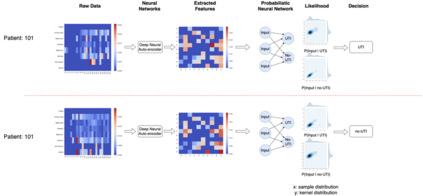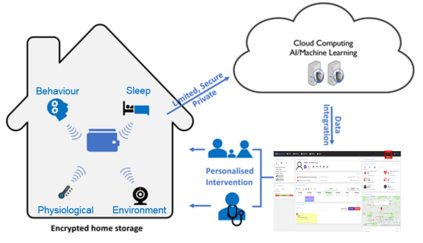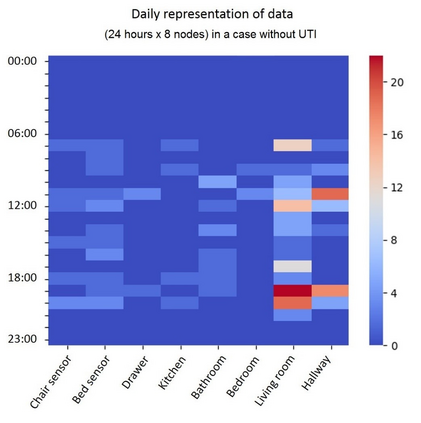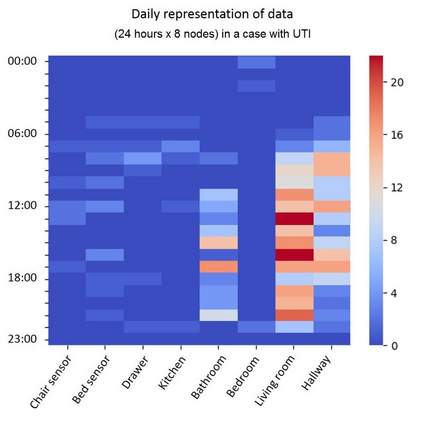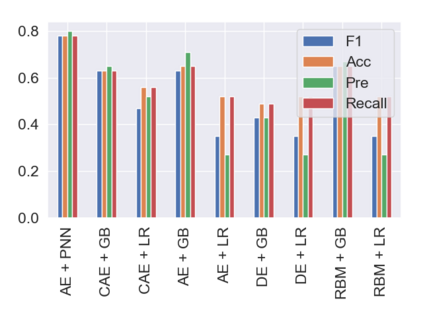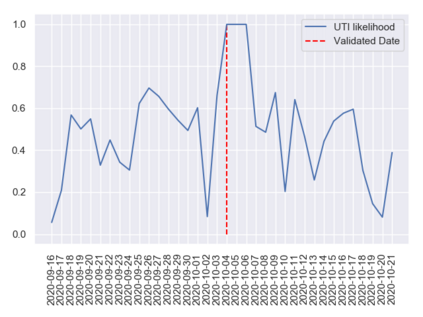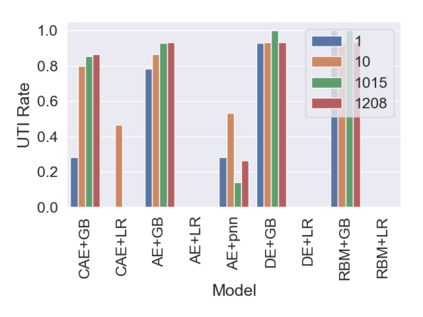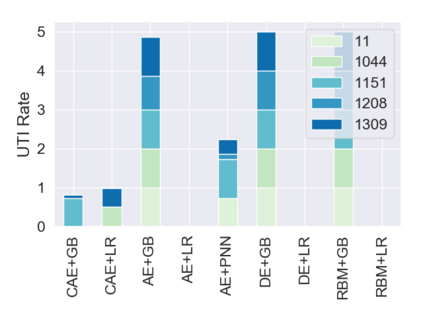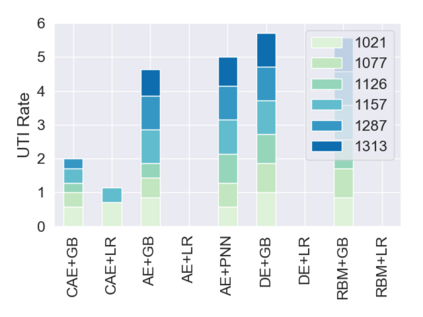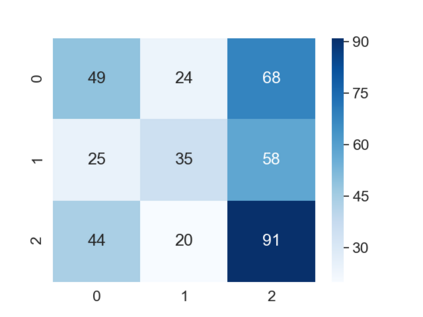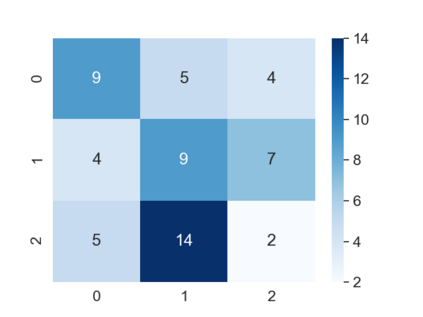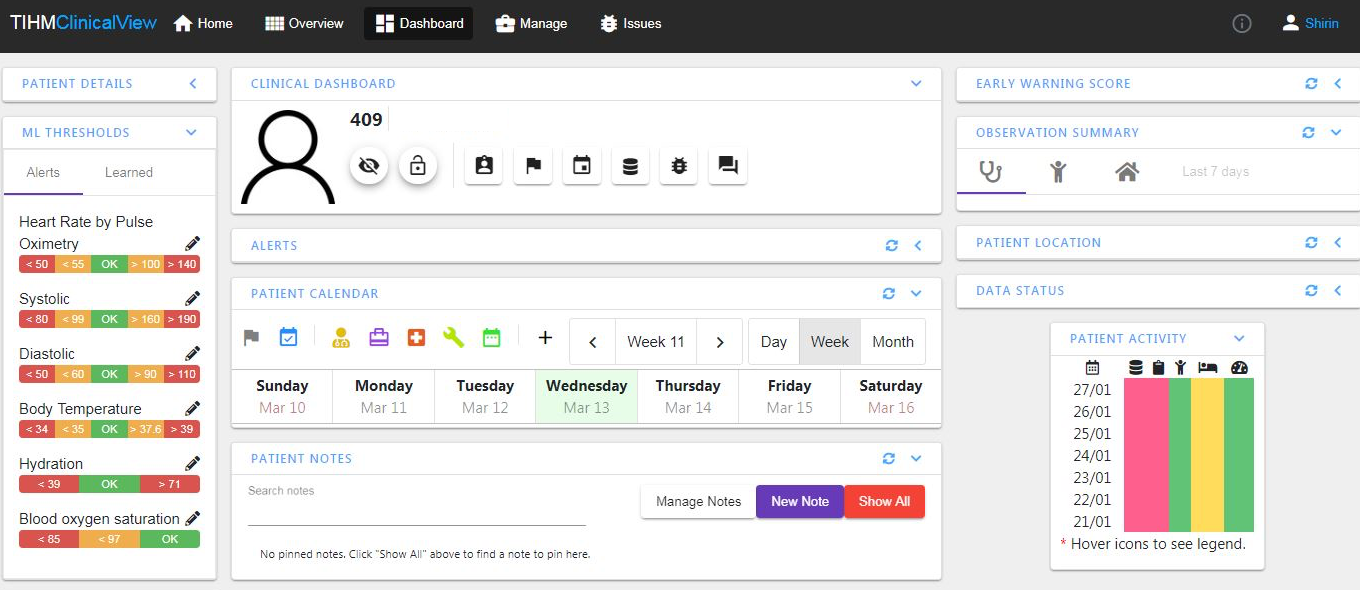Machine learning techniques combined with in-home monitoring technologies provide a unique opportunity to automate diagnosis and early detection of adverse health conditions in long-term conditions such as dementia. However, accessing sufficient labelled training samples and integrating high-quality, routinely collected data from heterogeneous in-home monitoring technologies are main obstacles hindered utilising these technologies in real-world medicine. This work presents a semi-supervised model that can continuously learn from routinely collected in-home observation and measurement data. We show how our model can process highly imbalanced and dynamic data to make robust predictions in analysing the risk of Urinary Tract Infections (UTIs) in dementia. UTIs are common in older adults and constitute one of the main causes of avoidable hospital admissions in people with dementia (PwD). Health-related conditions, such as UTI, have a lower prevalence in individuals, which classifies them as sporadic cases (i.e. rare or scattered, yet important events). This limits the access to sufficient training data, without which the supervised learning models risk becoming overfitted or biased. We introduce a probabilistic semi-supervised learning framework to address these issues. The proposed method produces a risk analysis score for UTIs using routinely collected data by in-home sensing technologies.
翻译:机械学习技术加上家庭内监测技术,为在痴呆症等长期条件下自动诊断和早期发现不利健康状况提供了独特的机会。然而,获得足够的贴标签培训样本,并纳入来自不同家庭内监测技术的高质量、定期收集的数据,是阻碍在现实医学中使用这些技术的主要障碍。这项工作提供了一个半监督模式,可以不断从日常收集的家庭内观察和测量数据中学习。我们展示了我们的模型如何处理高度不平衡和动态数据,以便在分析老年痴呆症中尿尿病风险时作出有力的预测。 UTI在老年中很常见,是患有痴呆症的人可以避免住院的主要原因之一。与健康有关的情况,如UTI在个人中比较少一些,将其归类为零星案例(即稀有或分散,但又重要事件)。这限制了获得足够的培训数据的机会,因此,没有监督的学习模型有可能变得过合身或有偏向。我们采用了一种预测性半监督的半监督性诊断方法,在常规学习框架中用这种方法来分析这些风险。

